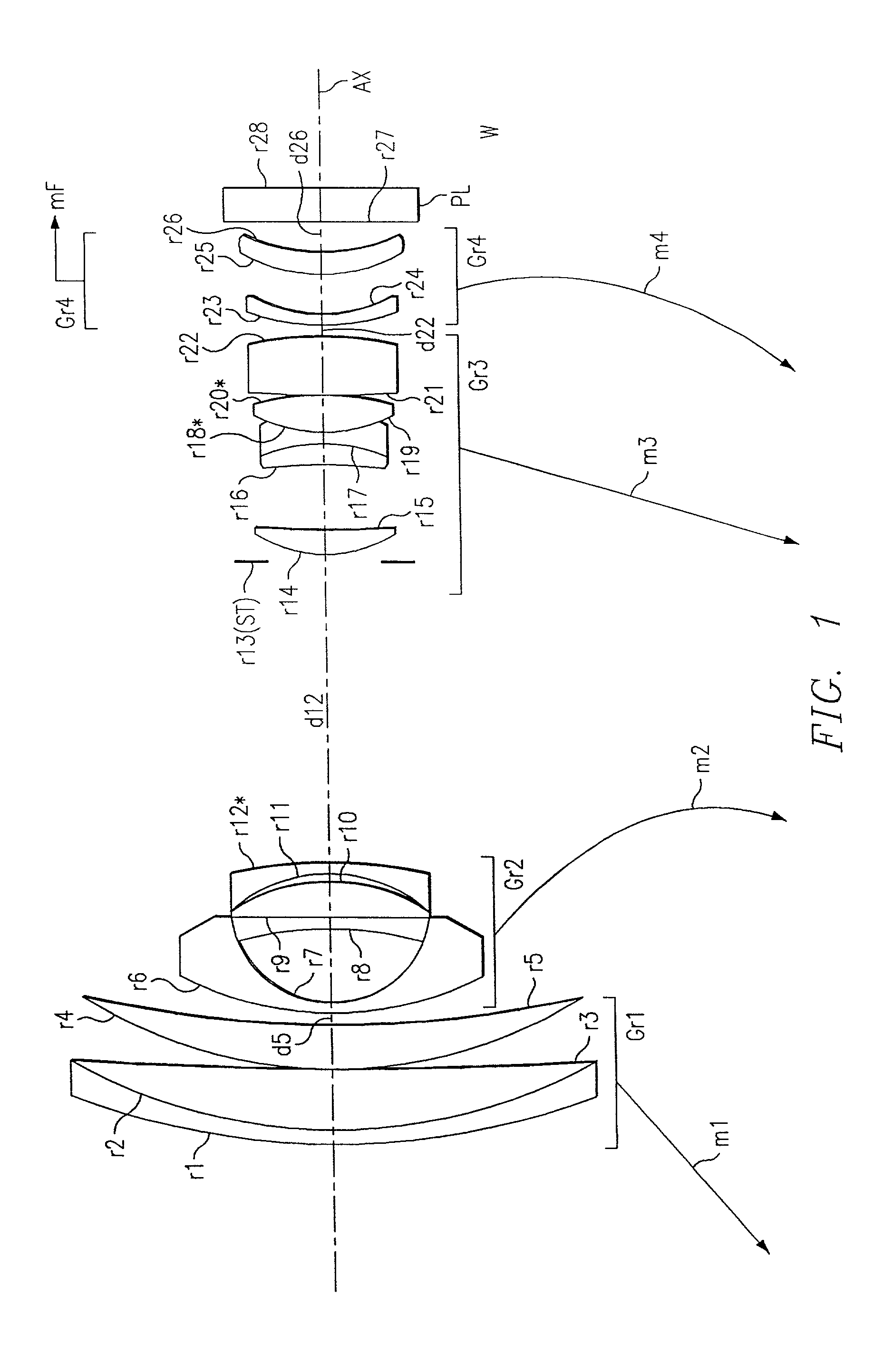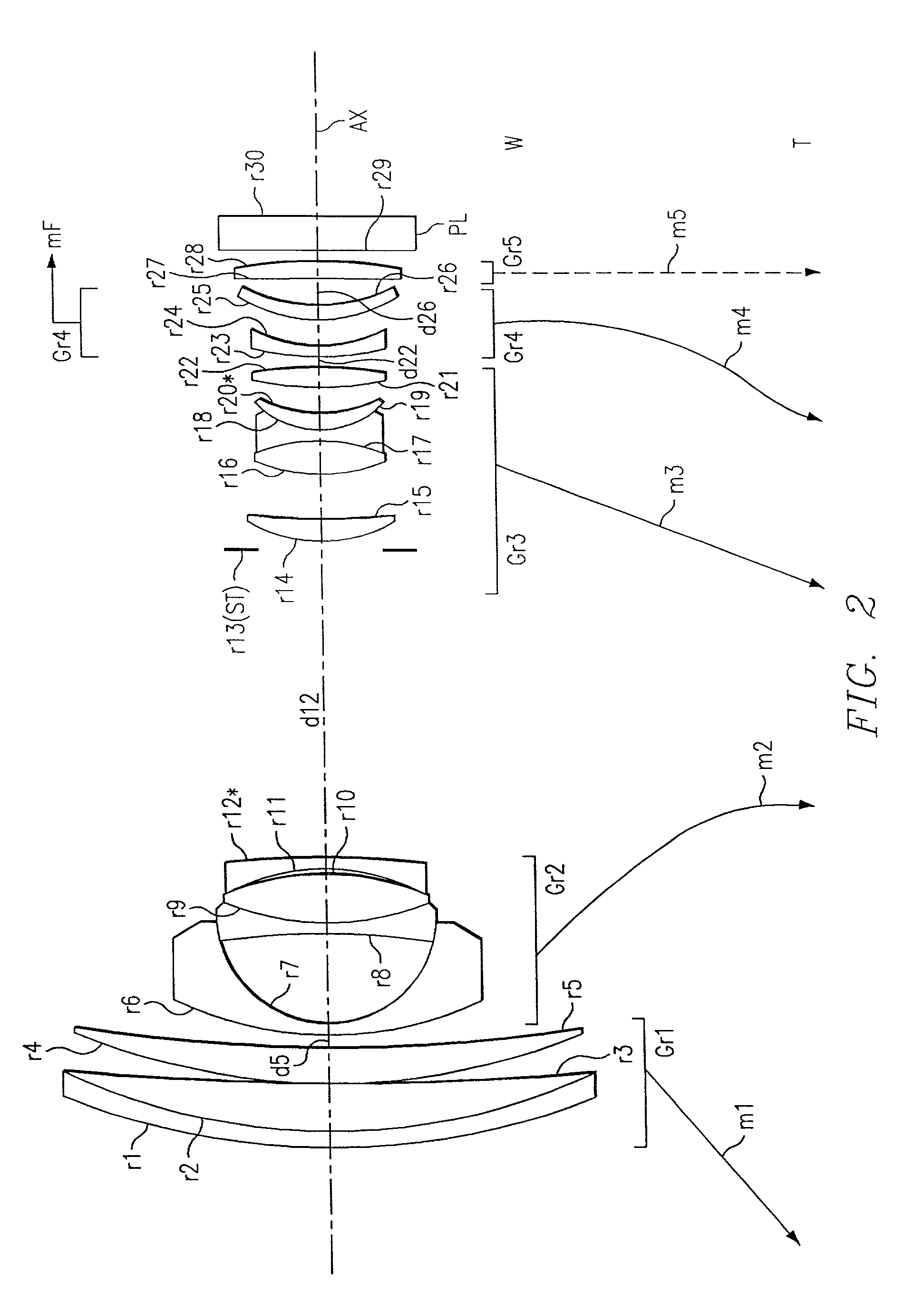Taking lens device
a technology of a lens and a lens body, which is applied in the field of taking lens devices, can solve the problems of large aberrations, unsuitable zoom lenses for further improvement for higher performance, and difficult to achieve higher performance necessitated,
- Summary
- Abstract
- Description
- Claims
- Application Information
AI Technical Summary
Problems solved by technology
Method used
Image
Examples
Embodiment Construction
presented below correspond to the first embodiment to the ninth embodiment, respectively, as described hereinbefore, and the lens arrangement diagrams (FIGS. 1 to 9) showing the lens arrangement of the first to ninth embodiments apply also to Examples 1 to 9, respectively.
[0081] Tables 1 to 9 list the construction data of Examples 1 to 9, respectively. In the construction data of each example, ri (i=1, 2, 3, . . . ) represents the radius of curvature (mm) of the i-th surface from the object side, di (i=1, 2, 3, . . . ) represents the i-th axial distance (mm) from the object side, and Ni (i=1, 2, 3, . . . ) and .nu.i (i=1, 2, 3, . . . ) represent the refractive index Nd for the d-line and the Abbe number (.nu.d) of the i-th optical element from the object side, respectively. Moreover, in the construction data, for each of those axial distances that vary with zooming (i.e., variable aerial distances), three values are given that are, from left, the axial distance at the wide-angle end...
PUM
 Login to View More
Login to View More Abstract
Description
Claims
Application Information
 Login to View More
Login to View More - R&D
- Intellectual Property
- Life Sciences
- Materials
- Tech Scout
- Unparalleled Data Quality
- Higher Quality Content
- 60% Fewer Hallucinations
Browse by: Latest US Patents, China's latest patents, Technical Efficacy Thesaurus, Application Domain, Technology Topic, Popular Technical Reports.
© 2025 PatSnap. All rights reserved.Legal|Privacy policy|Modern Slavery Act Transparency Statement|Sitemap|About US| Contact US: help@patsnap.com



